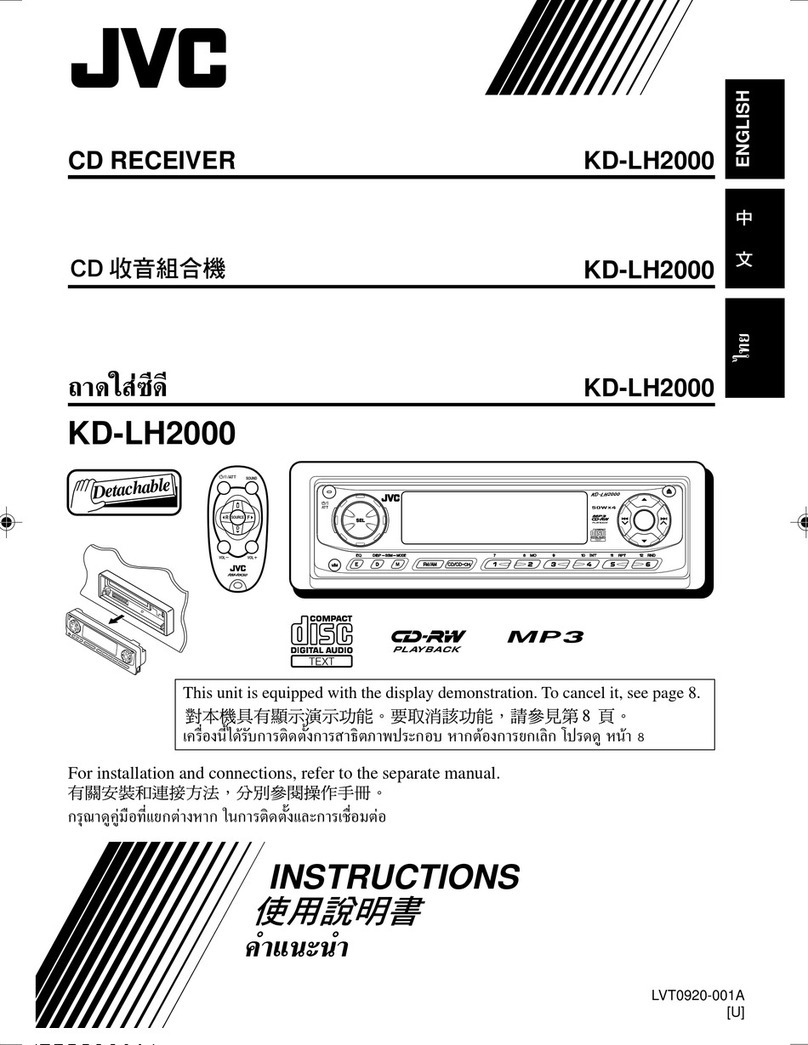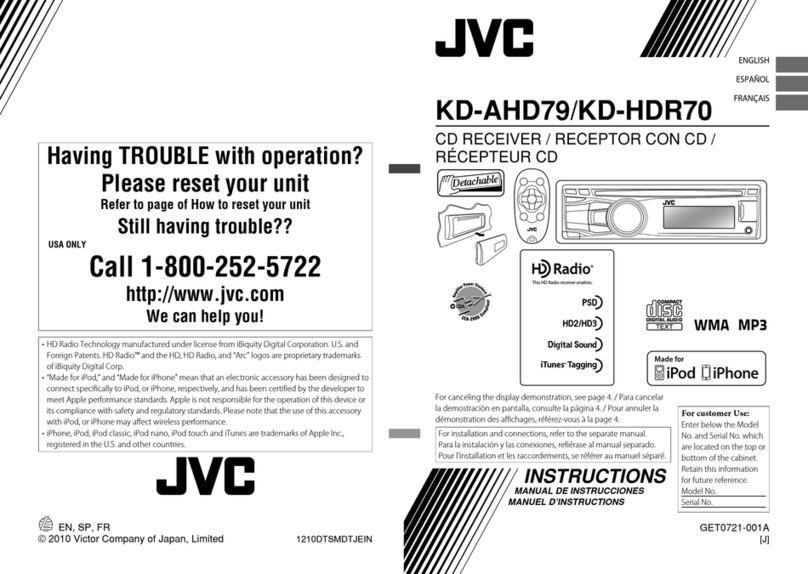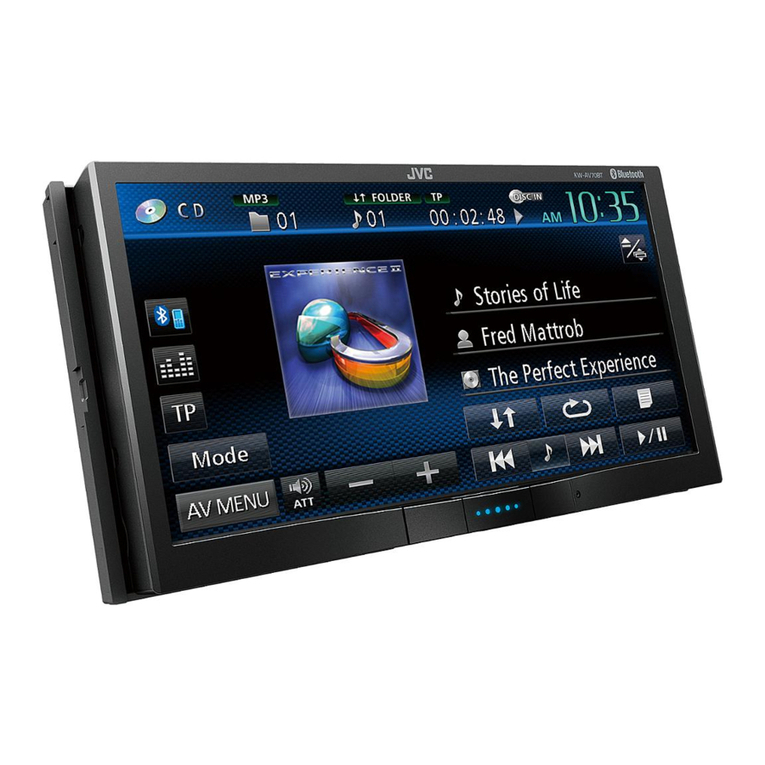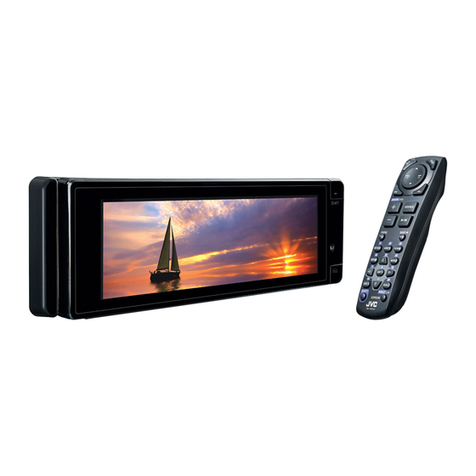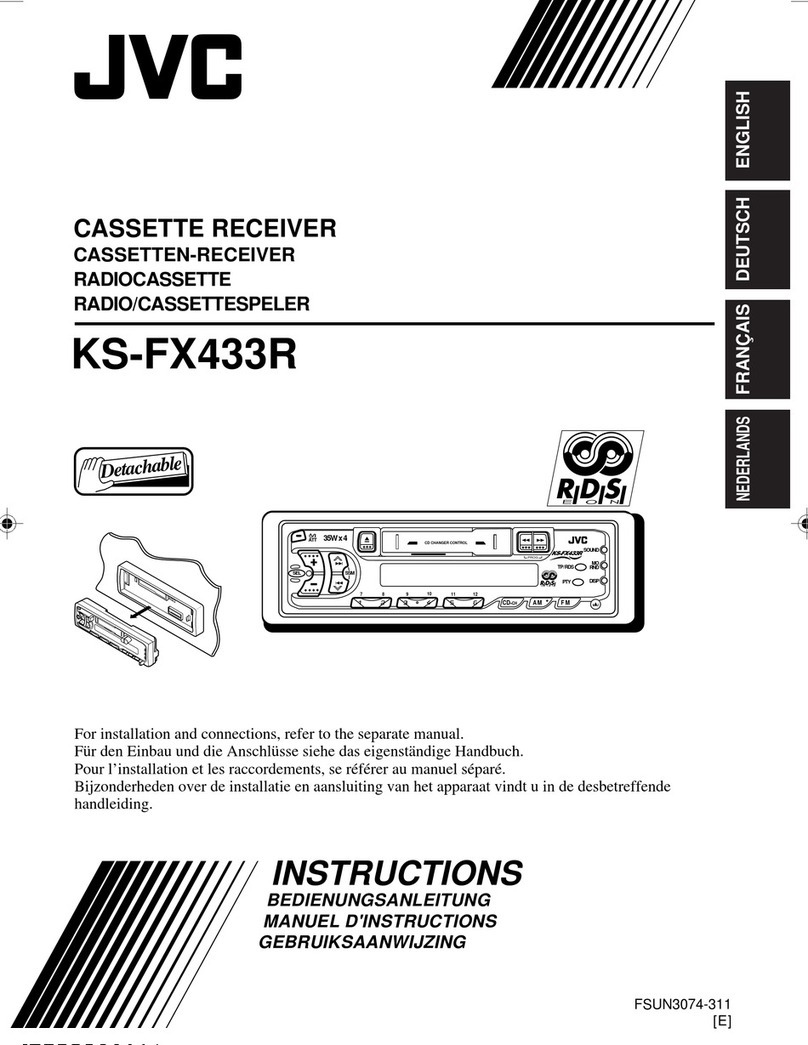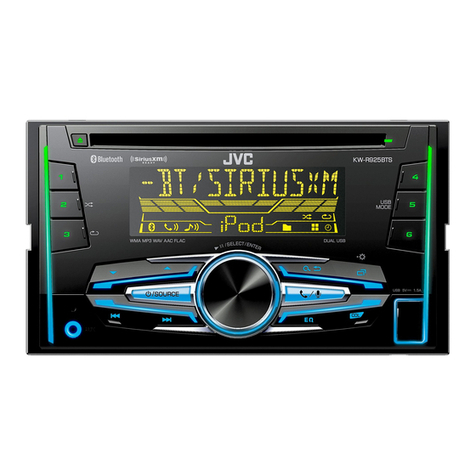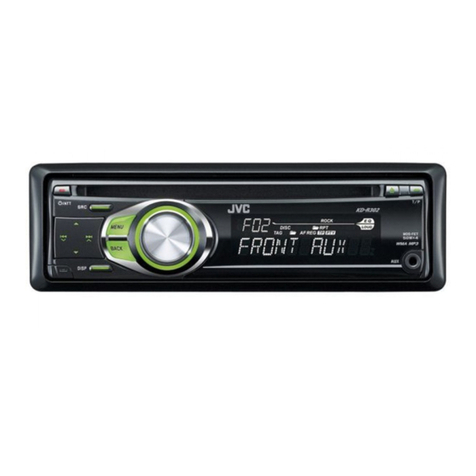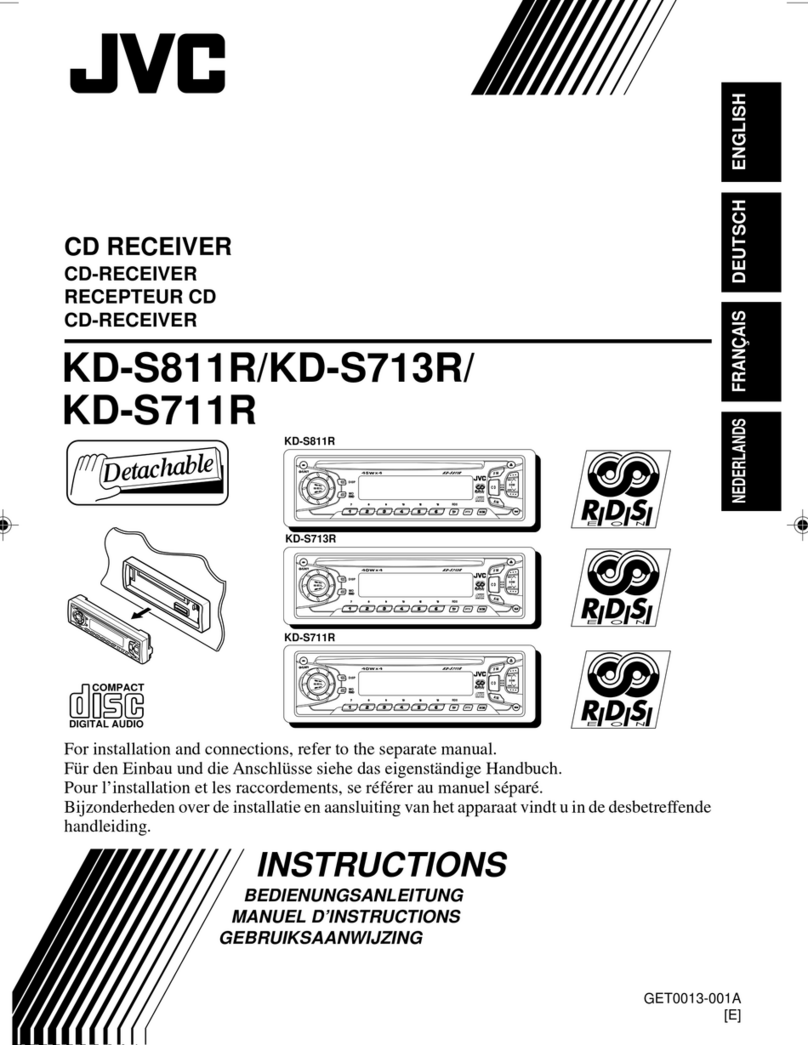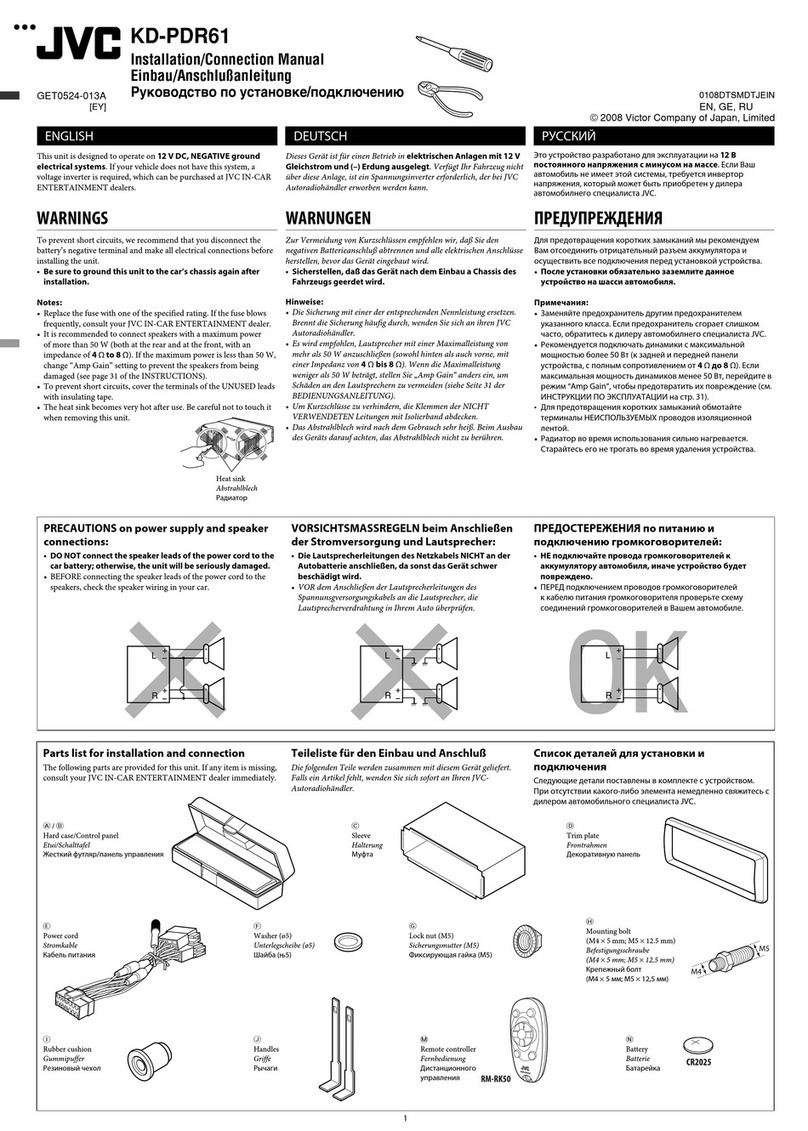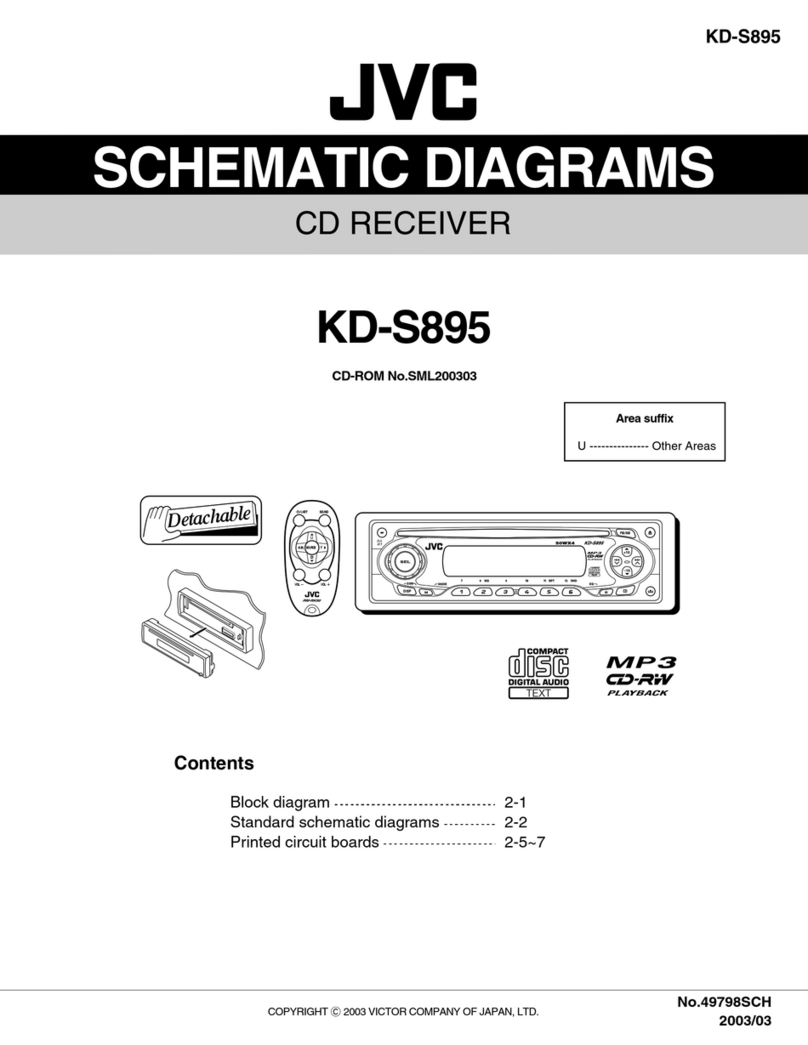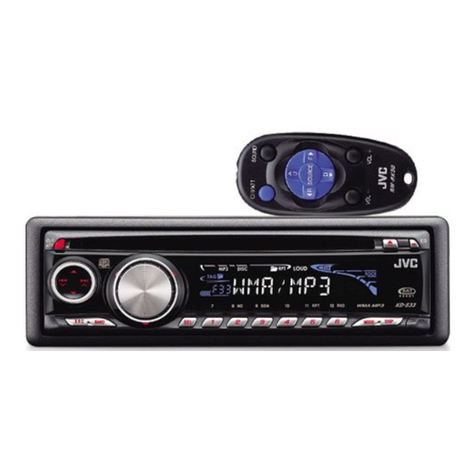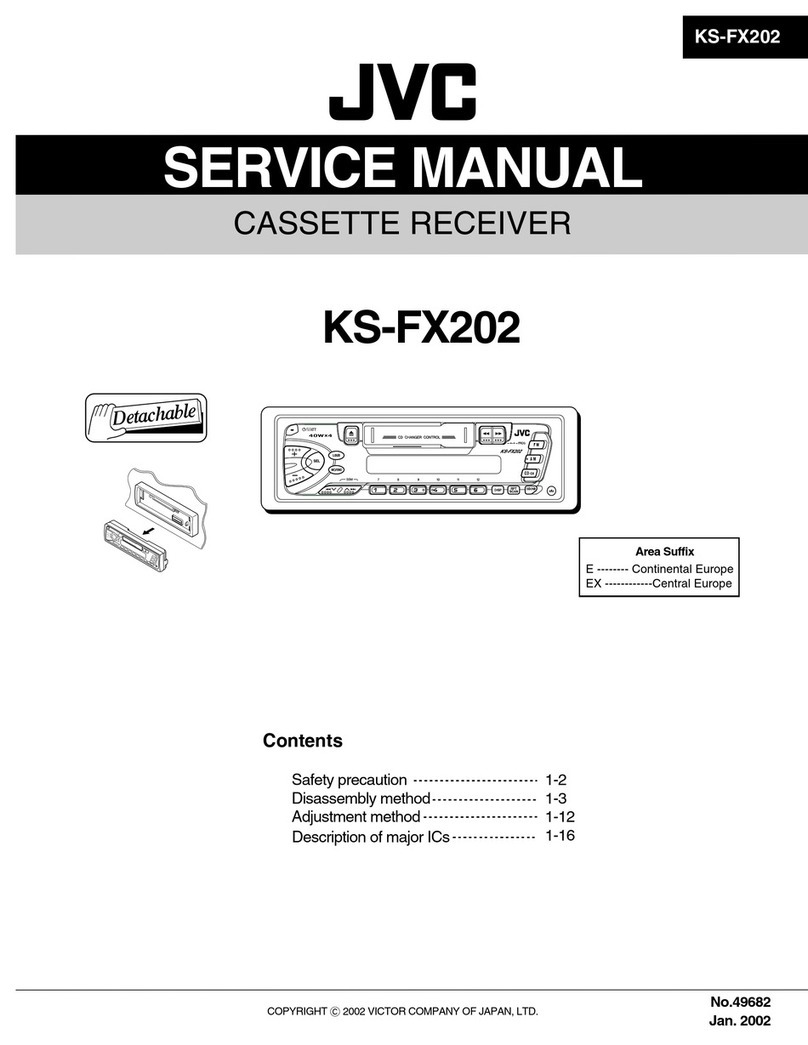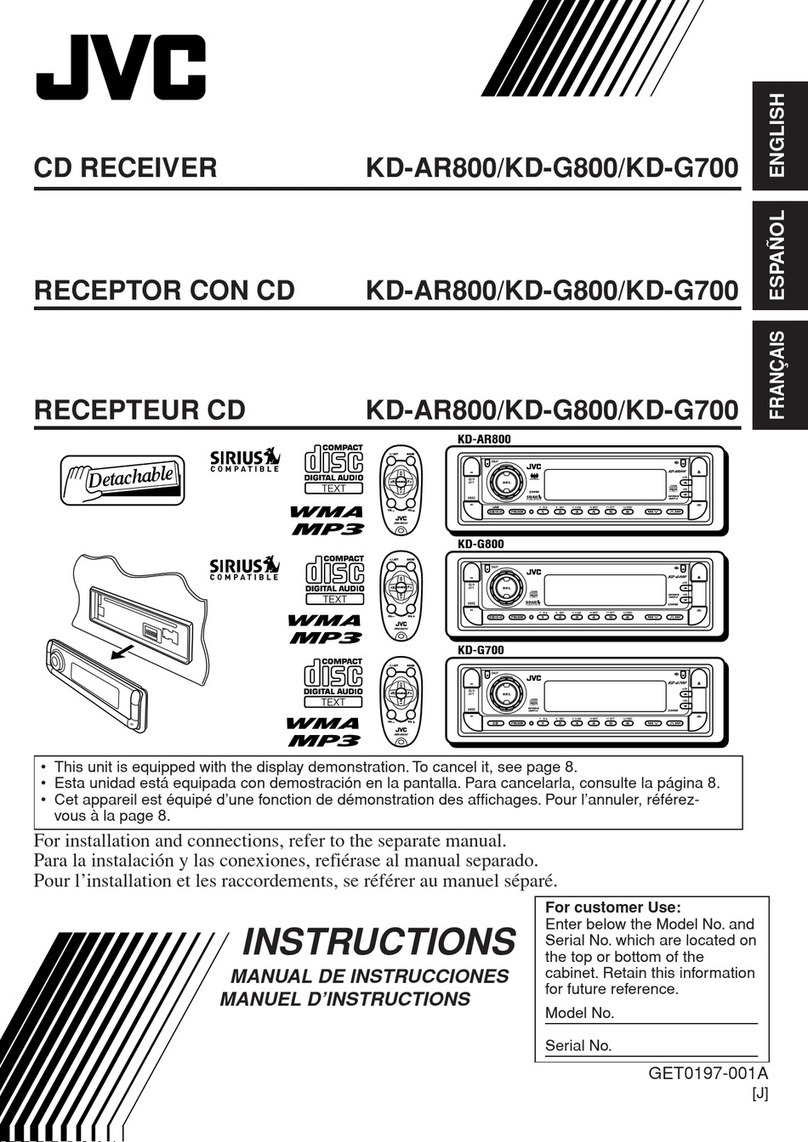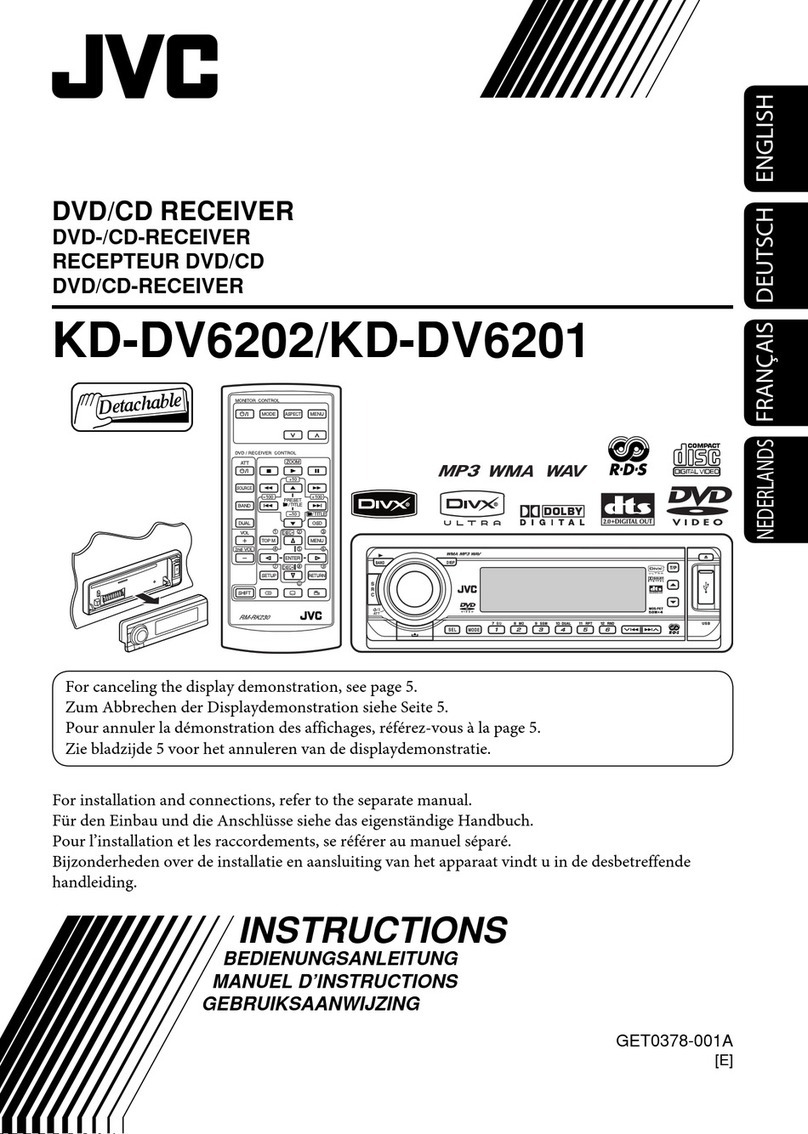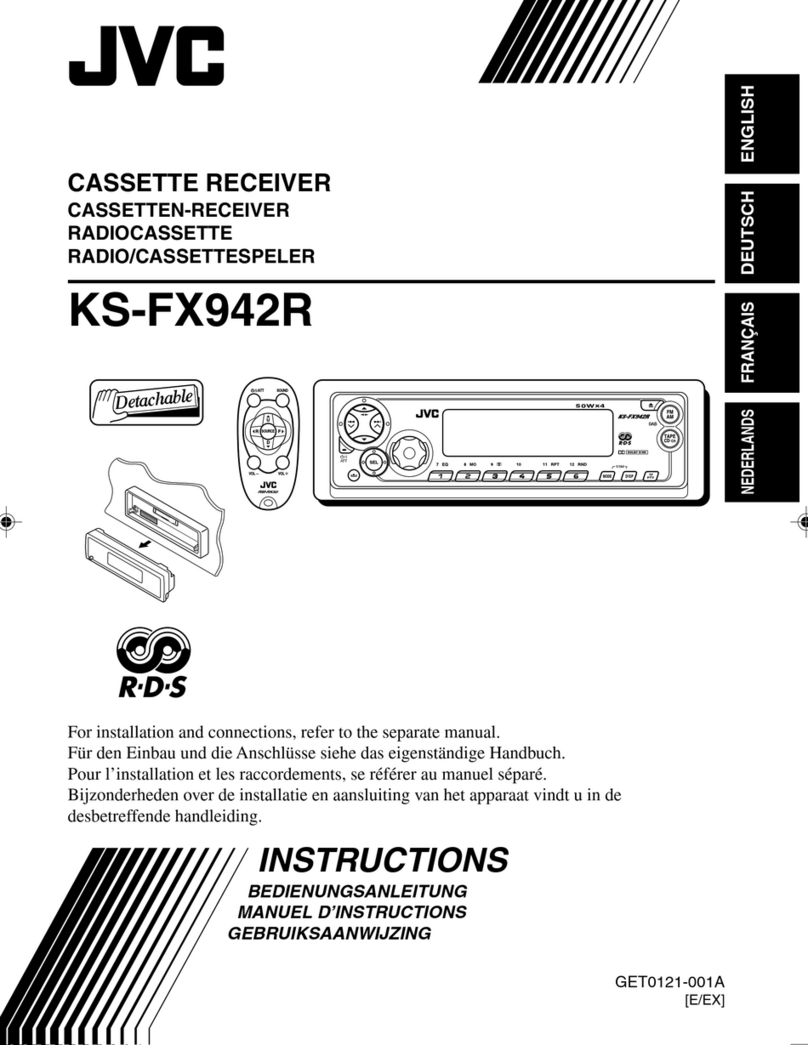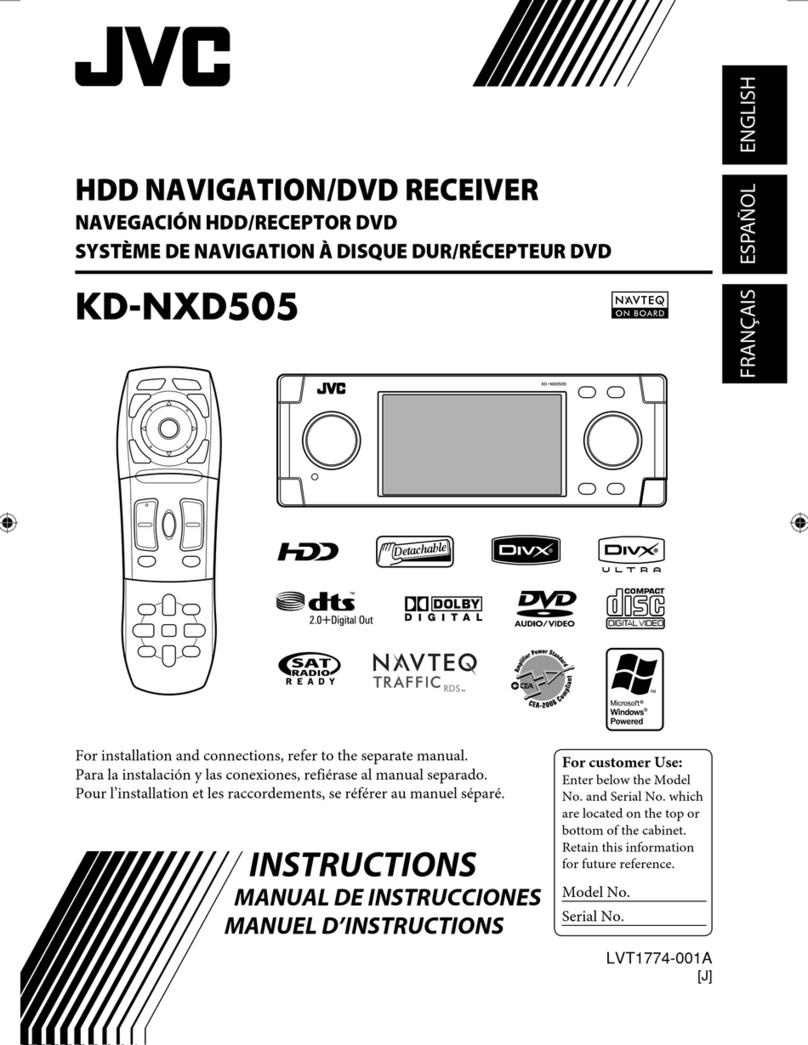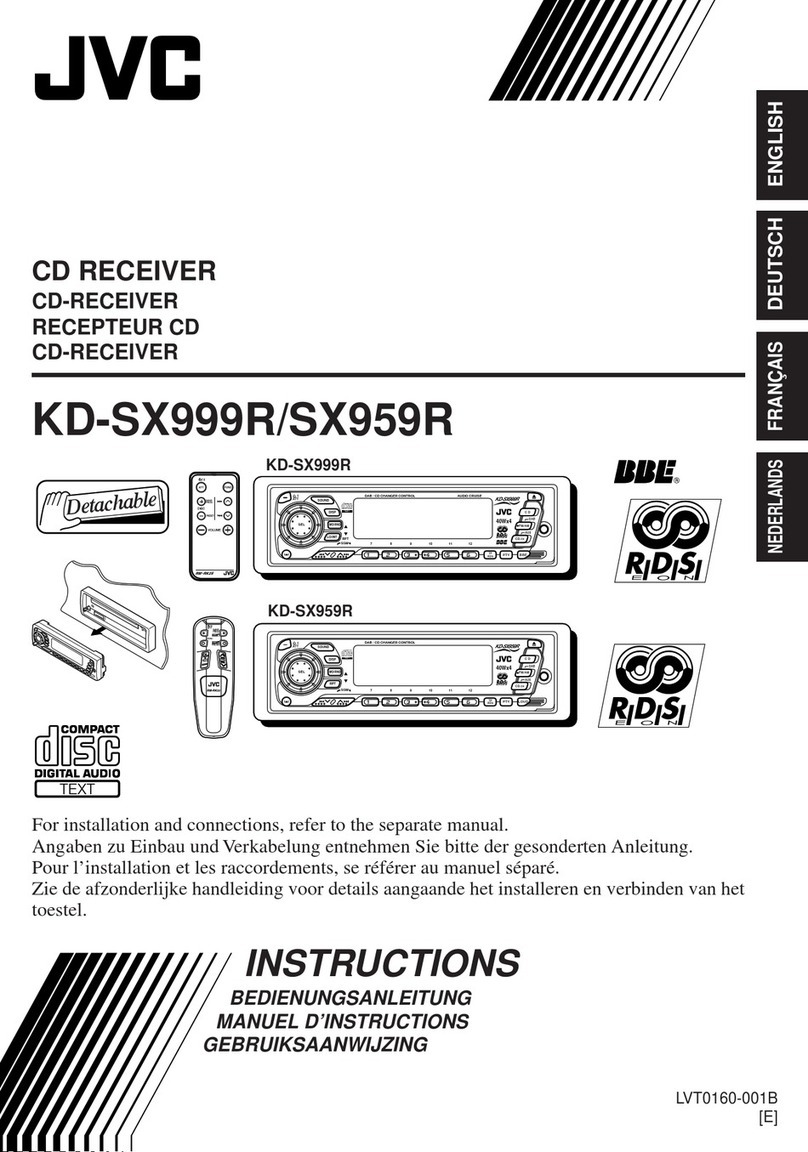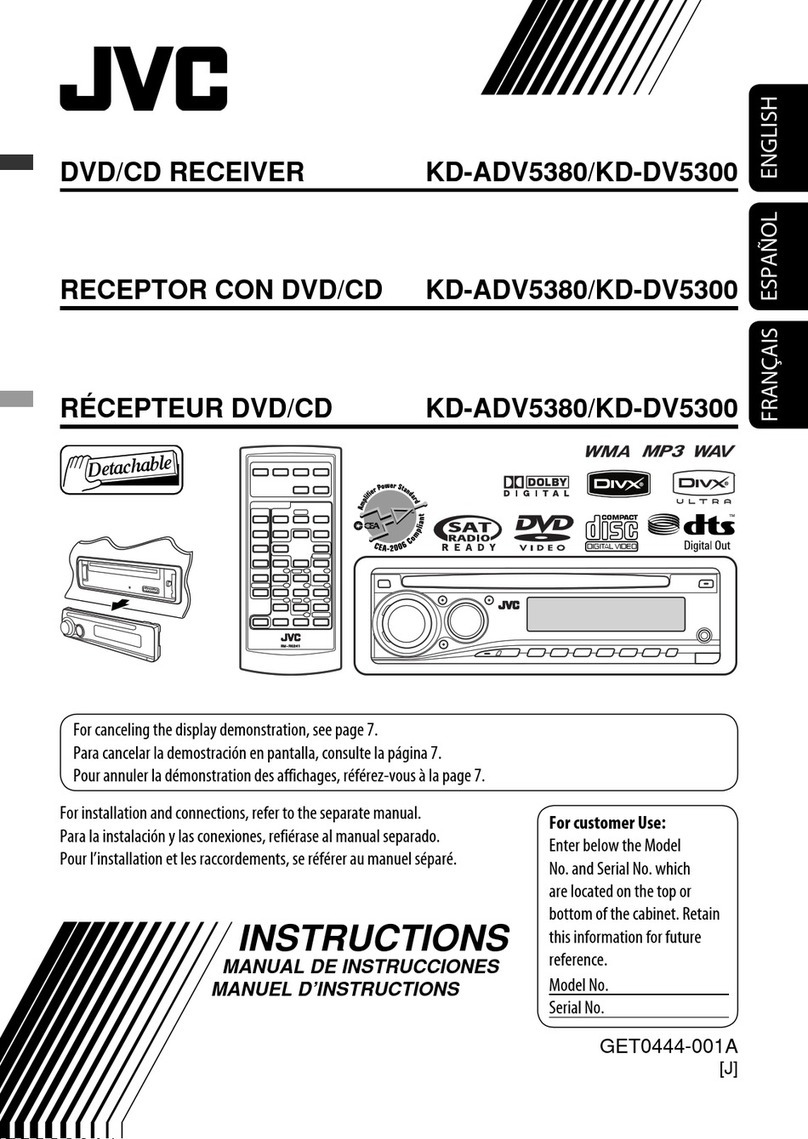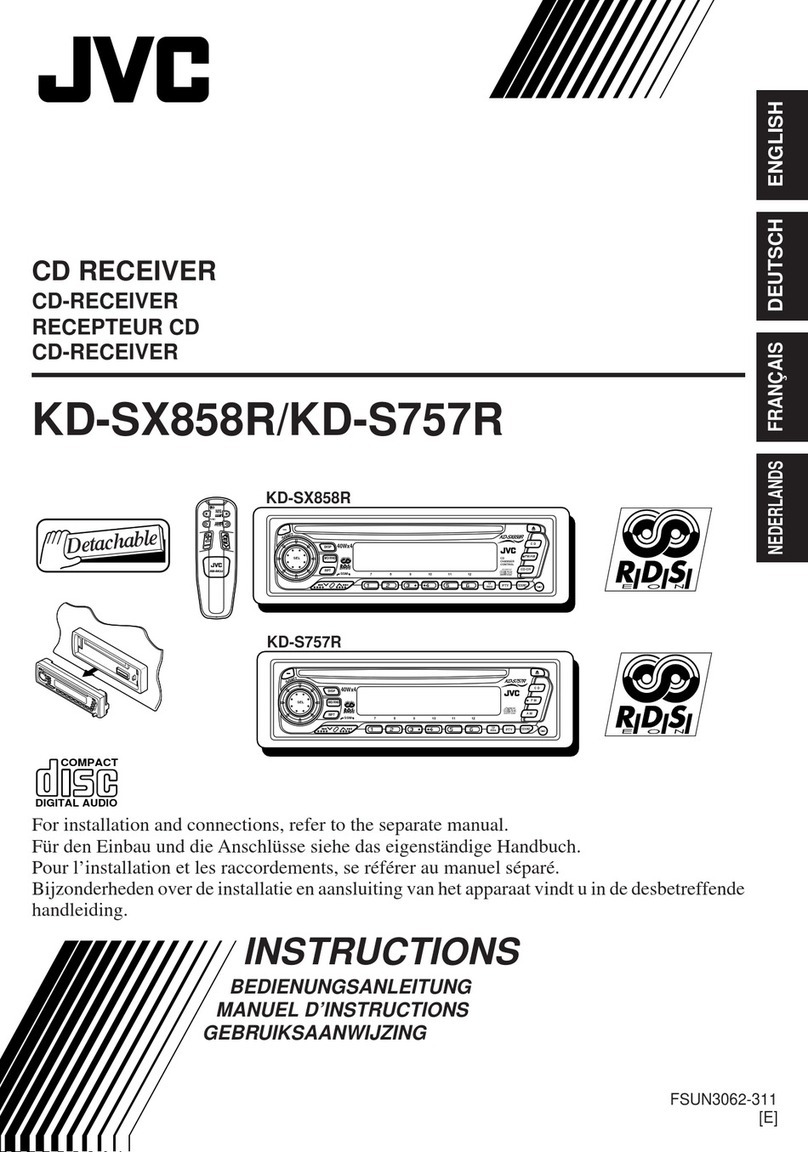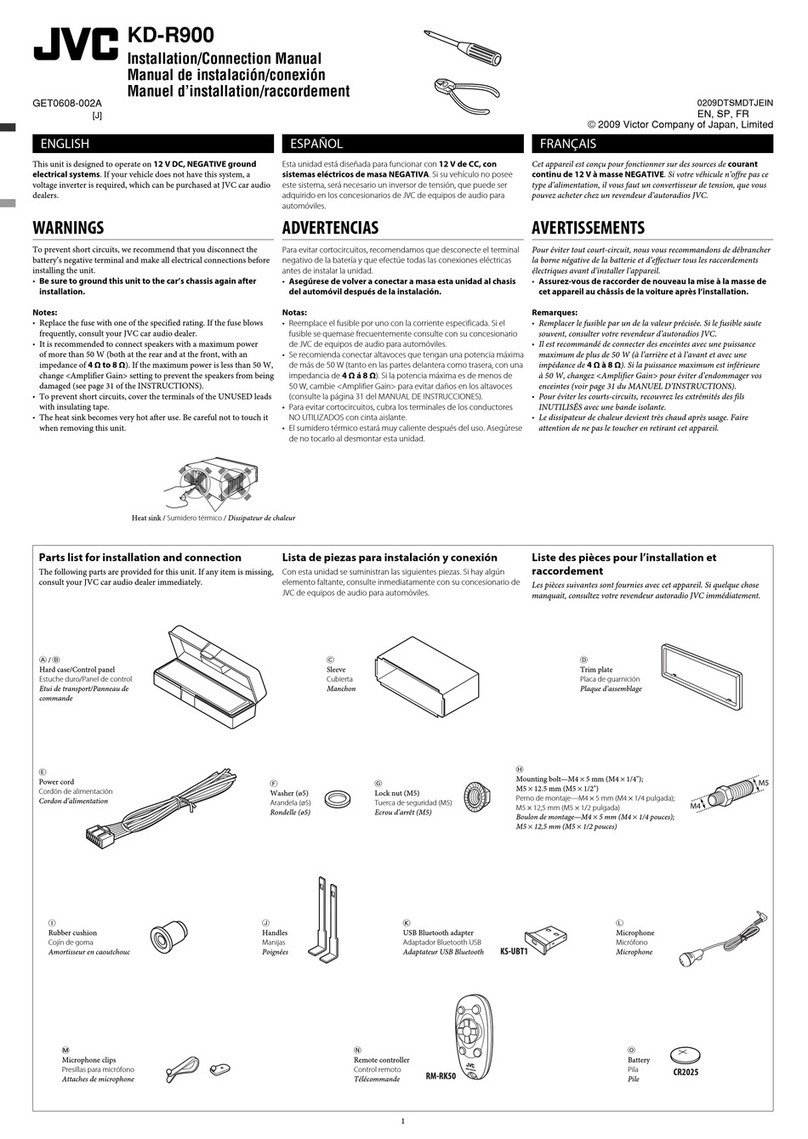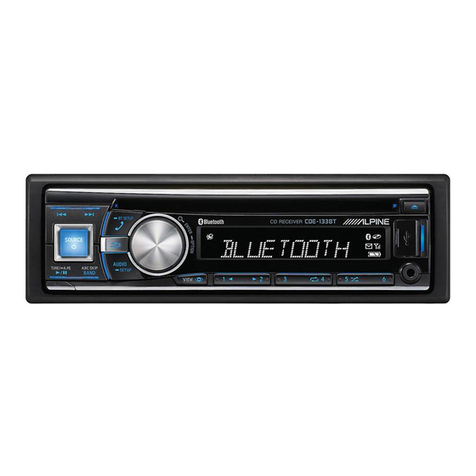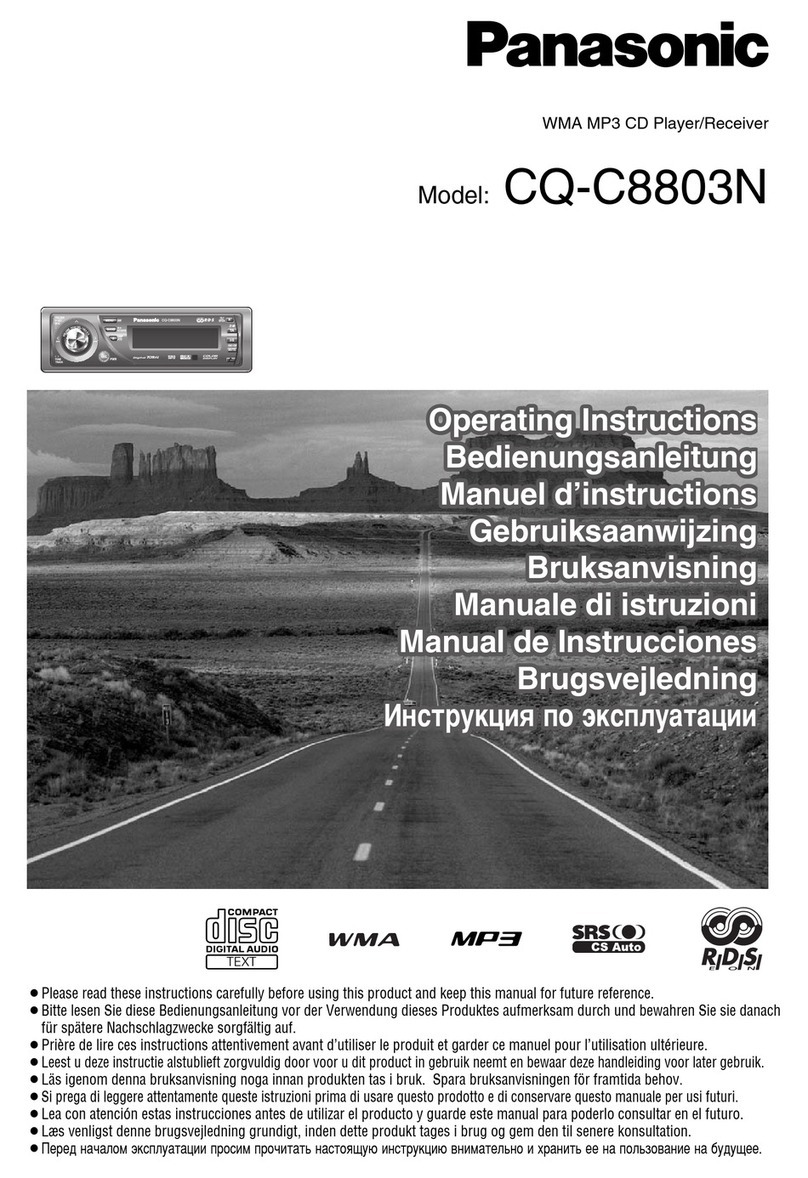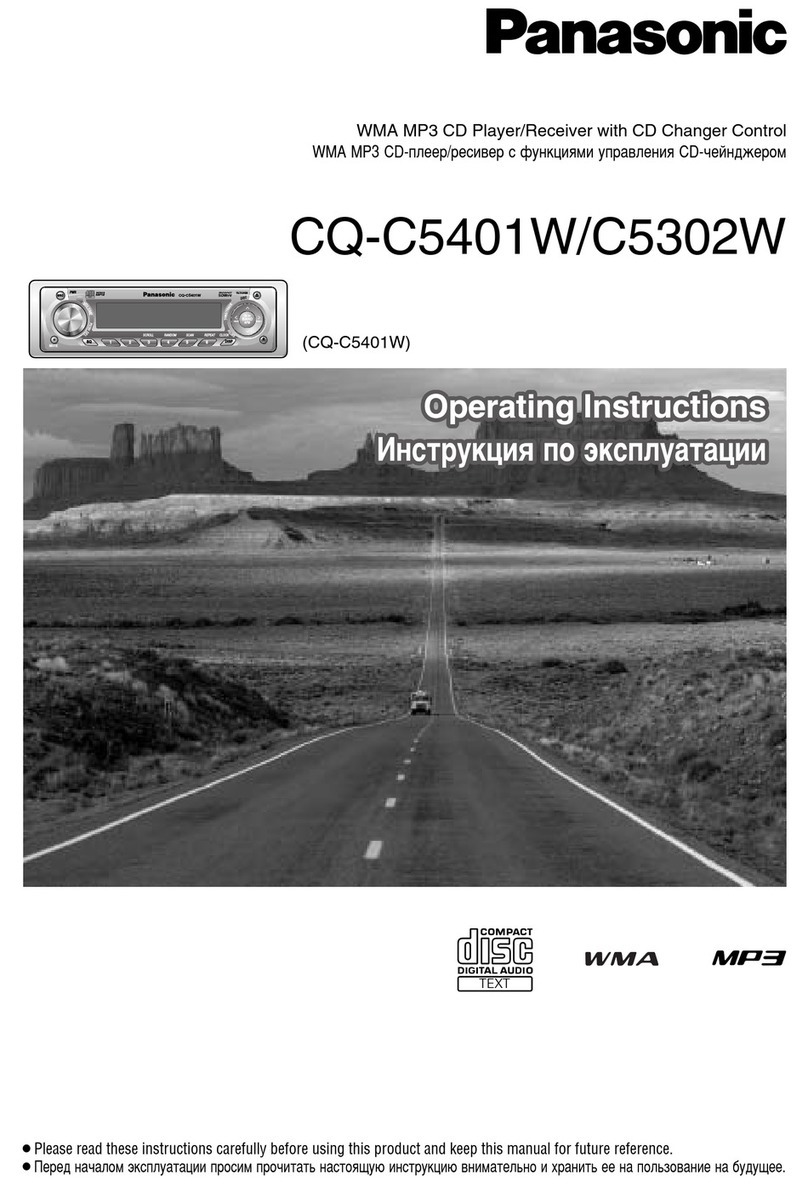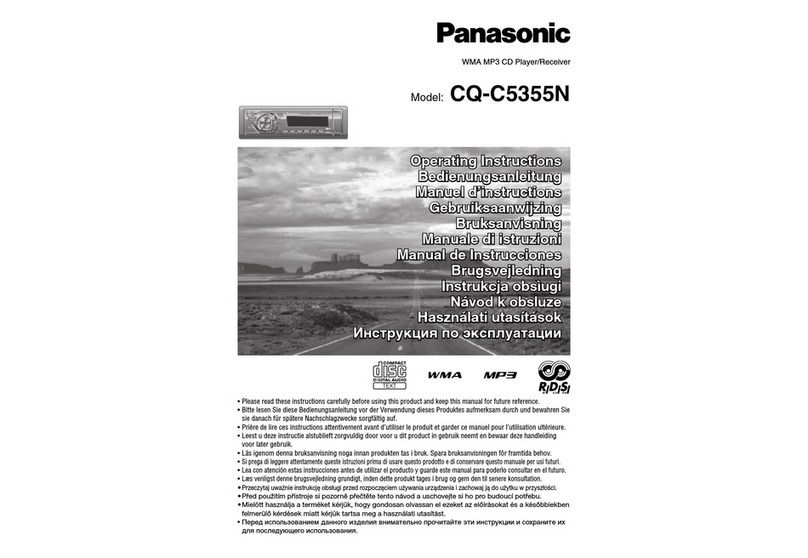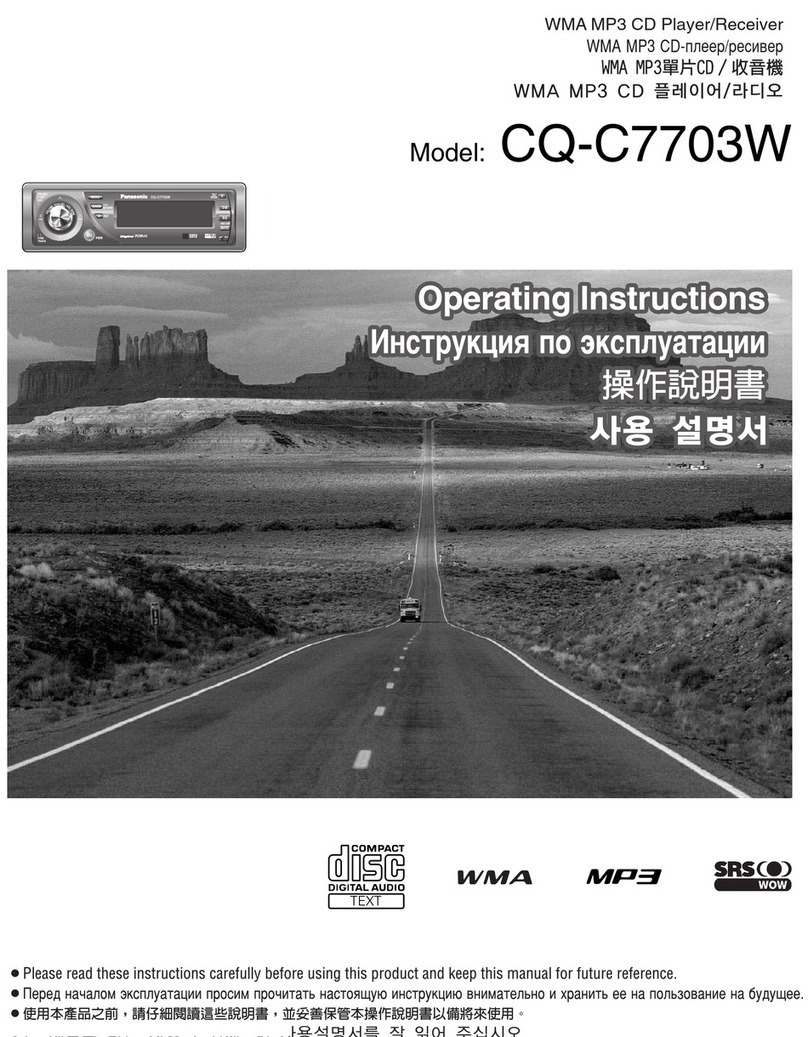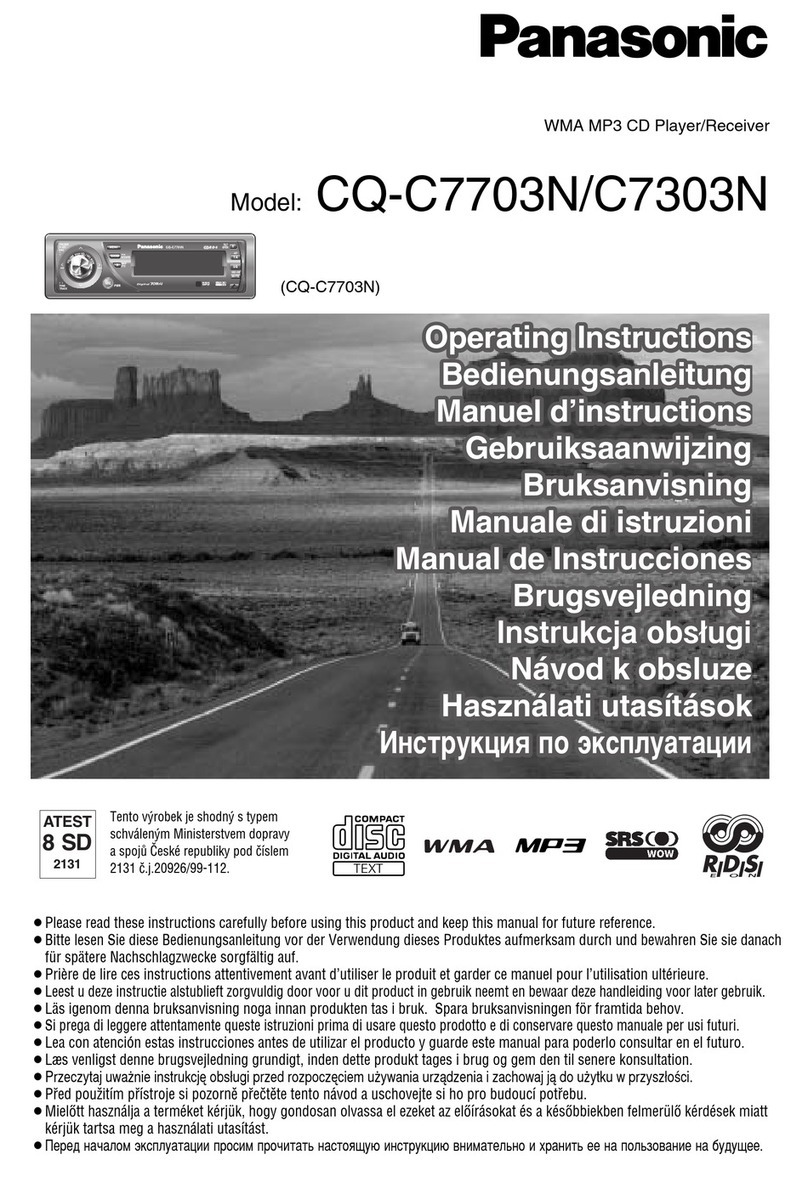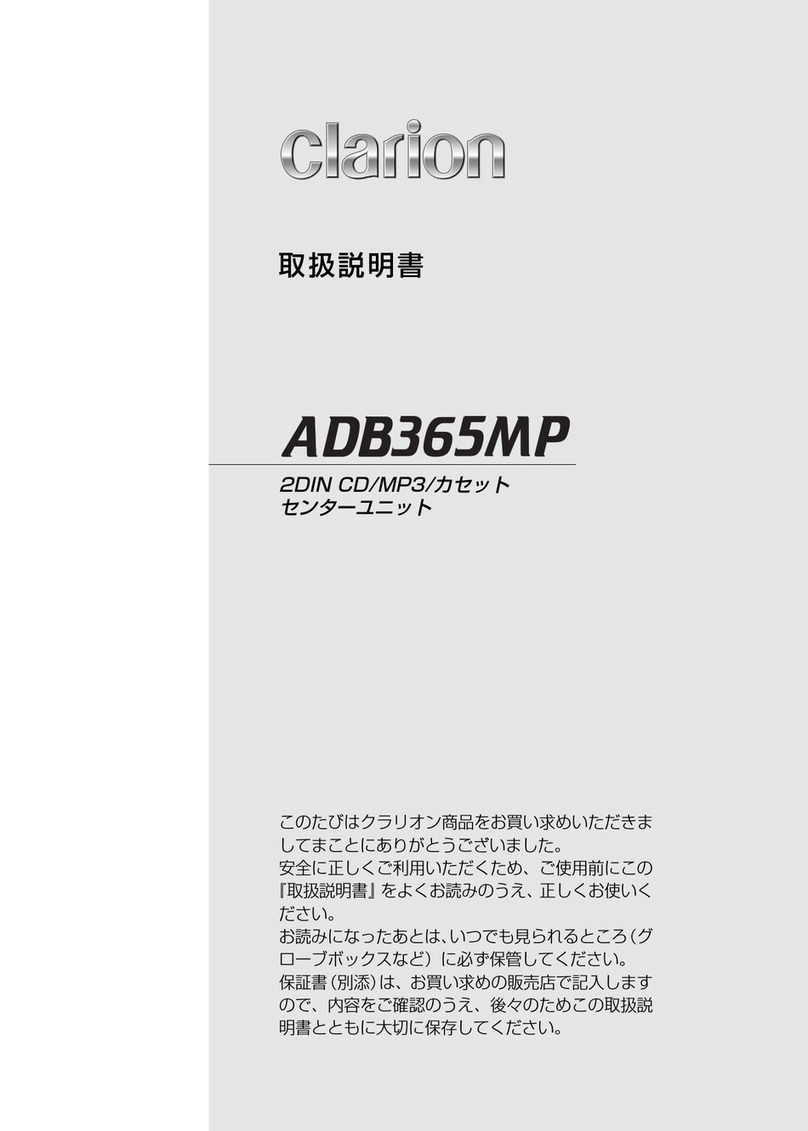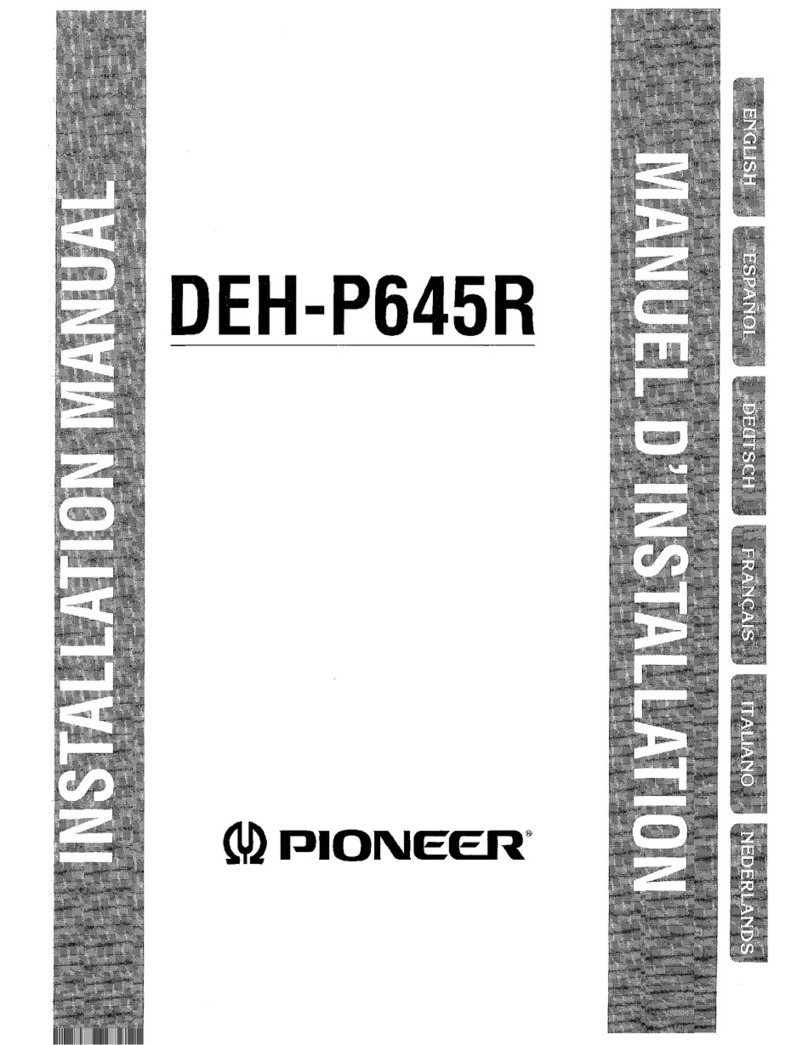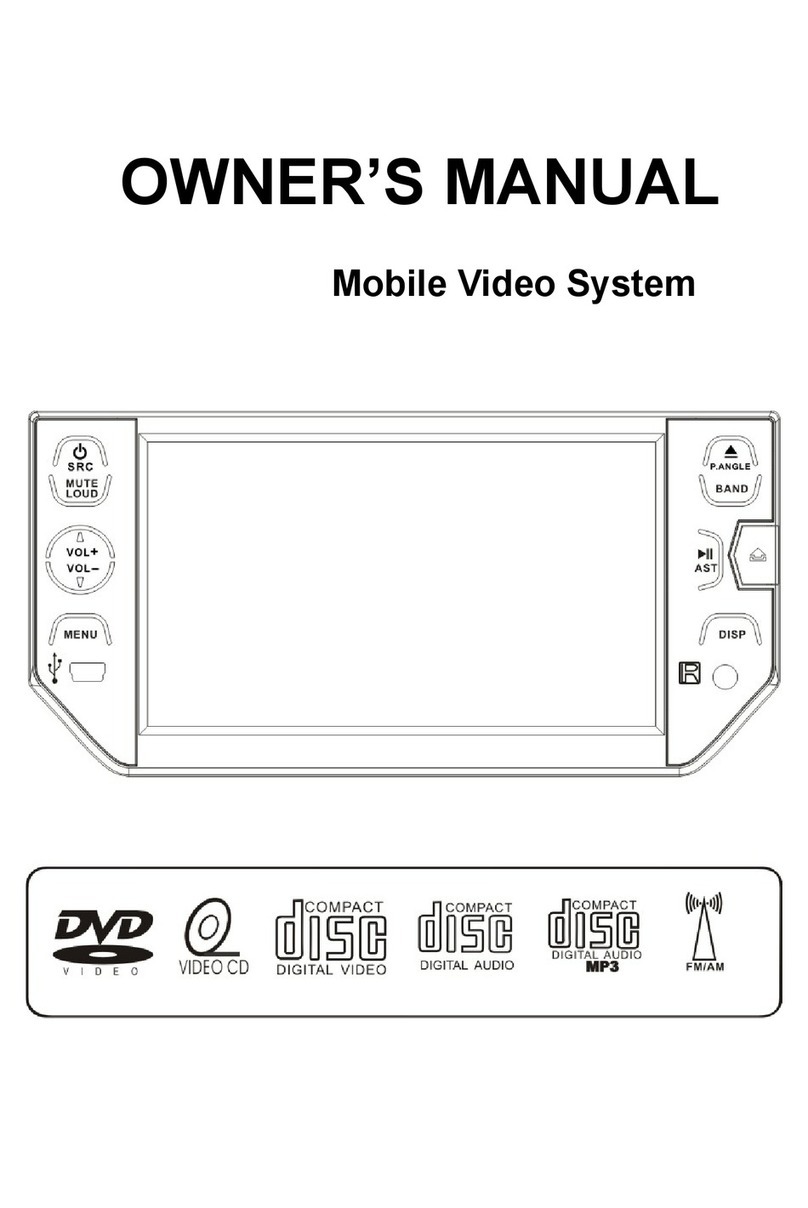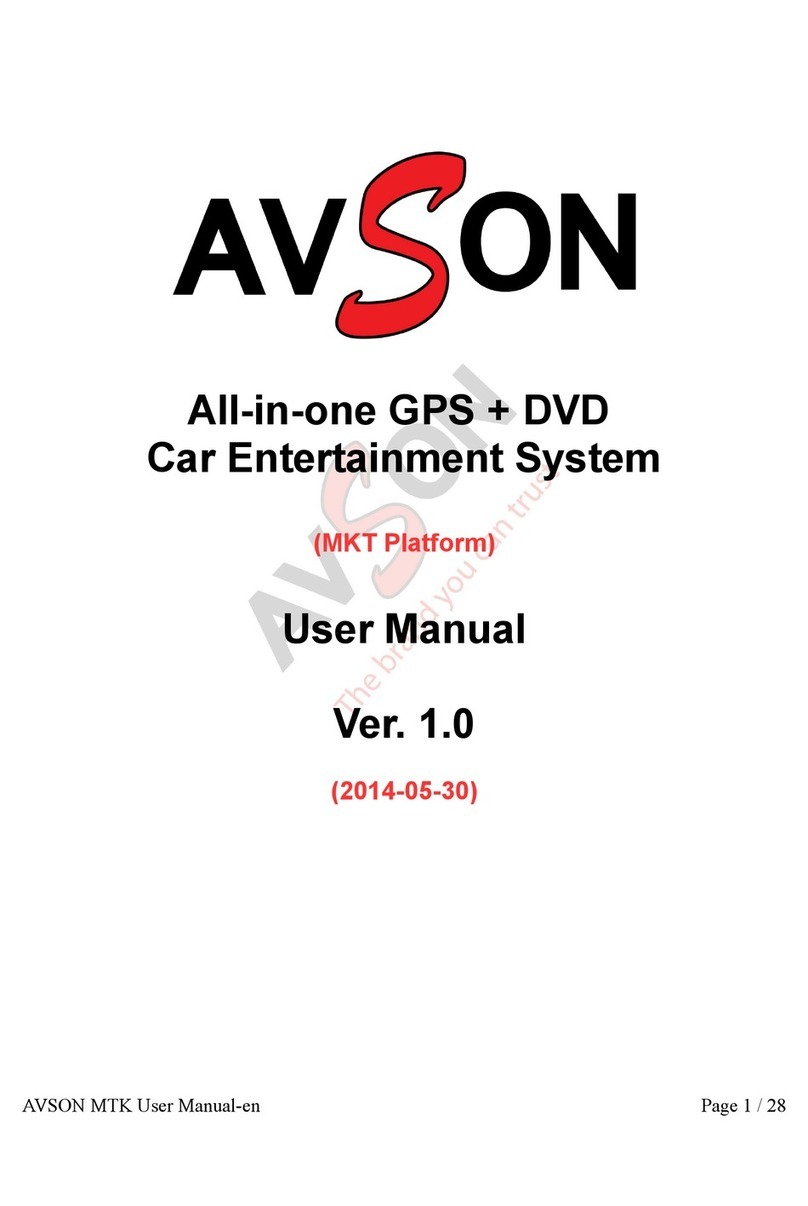
1-2 (No.MA041)
SPECIFICATION
Design and specifications are subject to change without notice.
AUDIO AMPLIFIER SECTION
Maximum Power Output Front 45 W per channel
Rear 45 W per channel
Continuous Power Output (RMS) Front 17 W per channel into 4 Ω40 Hz to 20 000 Hz at no more than 0.8%
total harmonic distortion.
Rear 17 W per channel into 4 Ω40 Hz to 20 000 Hz at no more than 0.8%
total harmonic distortion.
Load Impedance 4 Ω(4 to 8 Ωallowance)
Equalizer Control Range LOW ±12 dB (50 Hz, 80 Hz, 120 Hz)
MID ±12 dB (700 Hz, 1 kHz, 2 kHz)
HIGH ±12 dB (8 kHz, 12 kHz)
Frequency Response 40 Hz to 20 000 Hz
Signal-to-Noise Ratio 70 dB
Auxiliary input jack 3.5 mm dia. stereo mini jack
Line-Out Level/Impedance 2.0 V/20 kΩload (full scale)
Output Impedance 1 kΩ
TUNER SECTION
Frequency Range FM 87.5 MHz to 108.0 MHz
AM 531 kHz to 1 602 kHz
[FM Tuner] Usable Sensitivity 11.3 dBf (1.0 µV/75 Ω)
50 dB Quieting Sensitivity 16.3 dBf (1.8 µV/75 Ω)
Alternate Channel Selectivity
(400 kHz) 65 dB
Frequency Response 40 Hz to 15 000 Hz
Stereo Separation 35 dB
Capture Ratio 1.5 dB
[AM Tuner] Sensitivity 20 µV
Selectivity 35 dB
CD PLAYER SECTION
Type Compact disc player
Signal Detection System Non-contact optical pickup (semiconductor laser)
Number of channels 2 channels (stereo)
Frequency Response 5 Hz to 20 000 Hz
Dynamic Range 96 dB
Signal-to-Noise Ratio 98 dB
Wow and Flutter Less than measurable limit
MP3 decoding format MPEG1/2 Audio Layer 3
Max. Bit Rate 320 Kbps
CASSETTE DECK SECTION
Wow and Flutter 0.1 % (WRMS)
Fast-Wind Time 100 sec. (C-60)
Frequency Response 30 Hz to 16 000 Hz (Normal tape)
Signal-to-Noise Ratio (Normal tape)
Dolby B NR ON 65 dB
Dolby B NR OFF 56 dB
Stereo Separation 40 dB
GENERAL
Power Requirement Operating Voltage DC 14.4 V (11 V to 16 V allowance)
Grounding System Negative ground
Allowable Operating Temperature 0°C to +40°C
Dimensions (W ×H ×D) Installation Size 178 mm ×100 mm ×150 mm
Front Panel Size 170 mm ×96 mm ×20 mm
Mass 2.2 kg (excluding accessories)
